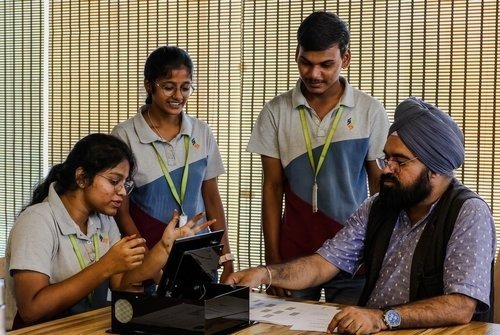DESIGN THINKING - "A Process"
Design with Purpose
At SIMATS Engineering, Design Thinking fuels Innovation, transforming Bold Ideas into Groundbreaking Solutions.
Equips yourself with the problem-solving power to
create tomorrow’s breakthroughs, today!
Empathy Sparks Ideas
Exploring DESIGN Key Stages ThroughInteractive Learning
In an interactive learning environment, students collaborate with faculty to understand the key stages of Design Thinking—Empathize, define, Ideate, Prototype, and Test. Through discussions, research, and hands-on prototyping, they develop critical thinking, teamwork, and innovative problem-solving skills to address real-world challenges.
Thoughtful Discussions in Class: Teaching the Art of Empathizing
Students immerse themselves in user-centric design by deeply understanding real-world users’ needs, challenges, and perspectives. Through thoughtful discussions, immersive research, and hands-on activities, they gain insights into user experience. A collaborative learning journey nurtures human-centered thinking
Designs Born From Ideas
Defining the Problem
Students collaborate with faculty to analyse user research, identify pain points, and develop user personas, focusing on real-world problems. Students refine their problem statements, fostering critical thinking, teamwork, and actionable insights for innovative solutions.
Ideation
Our students follow a 10-step ideation framework, refining ideas through collaboration, market insights, and user personas to develop practical solutions. They learn to iterate, test assumptions, and adjust strategies based on real-time feedback and evolving user needs.
Prototype To Product
Prototype Presentation
A student presents their prototype, demonstrating its functionality and real-world impact. Peers and mentors provide valuable feedback, fostering improvements and innovation. This collaboration brings the project closer to practical deployment and success.
Visualizing Innovation
Students bring ideas to life through mind mapping and sketching, refining concepts and uncovering new possibilities. This hands-on approach fosters creativity, collaboration, and rapid prototyping for effective idea development.























































